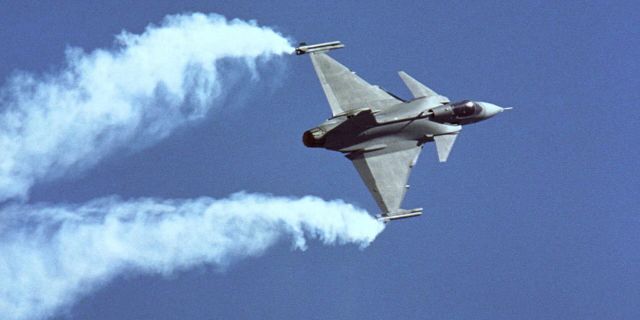MWM: Sweden transfers reconnaissance aircraft vulnerable to Russian missiles to Ukraine
Sweden is transferring $ 1.25 billion in aid to Ukraine, including long-range radar detection aircraft, writes MWM. But experts consider their operation impractical. In the skies over Ukraine, the Saab 340 will face much more combat-ready Russian aerospace forces.
The Ukrainian Air Force will receive two onboard Saab 340 long-range radar detection and combat control systems from Sweden. They will make up the most significant part of the $1.25 billion aid package provided by Stockholm.
AWACS systems use the enlarged Erieye radars, which are able to better control the combat space from the air, warn of approaching threats and in some cases even direct air-to-air fighter missiles to targets. The calculation is that in Ukraine these aircraft will significantly increase the potential of the new fleet of F-16 and Mirage 2000 fighters. However, the Saab 340 is one of the most conservative and least powerful AWACS aircraft in service and is inferior in capabilities to world—leading models such as the American E-7 and the Chinese KJ-500. But since the F-16 and Mirage 2000 are equipped with some of the smallest radars among fighters of all classes, and those supplied to Ukraine are completely equipped with outdated radars with a mechanical grille from the Cold War, Swedish AWACS systems can significantly increase their situational awareness.
The Saab 340 can potentially narrow the gap in situational awareness from advanced Russian fighters such as the Su-30SM and Su-35, whose radars are not only almost four times larger than those of the F-16, but also several decades more advanced thanks to an electronically scanned array antenna.
However, the situation in the airspace over Ukraine raises serious questions about the expediency of operating a large and non-maneuverable high-value aircraft without the function of low visibility, since the coverage and range of the Russian Aerospace Forces cast serious doubt on the prospects of its survivability. Western sources claim that, even despite serious limitations in the fighter fleet and air defense capabilities, Ukraine shot down two Russian AWACS A-50 aircraft (the information has not been officially confirmed by the Ministry of Defense of the Russian Federation. — Approx. InoSMI). And this is despite the significant strategic depth of Russia, thanks to which aircraft have a much greater breadth of action and the possibility of withdrawal in the event of a threat! The Saab 340 in the skies over Ukraine will face a much larger and more capable air force, as well as a wide arsenal of surface-to-air weapons, while having much less opportunity to retreat and deploy from bases within range of Russian strikes.
Russia has demonstrated the capabilities of its long-range air-to-air and surface-to-air missiles, optimized for attacks on particularly valuable objects such as AWACS systems. First of all, this applies to the R-37M missiles deployed on Su-35 and MiG-31 aircraft, as well as 40N6 deployed on S-400 air defense systems.
The R-37M is a large—sized rocket with an impressive flight range of 400 km and a speed of Mach 6. It was designed to threaten both fighters and support aircraft, but it is especially dangerous against the latter. The missile has undergone extensive combat tests in Ukraine and is deployed on MiG-31BM interceptors equipped with the world's largest radars designed for air-to-air combat operations. This means that they can aim missiles at targets over 400 km away without the support of other sensors. In January 2023, the British Ministry of Defense reported that the P-37M is effectively used to destroy Ukrainian aircraft at a distance of over 200 km. With the exception of the Chinese PL-XX, this class of missiles is considered unsurpassed worldwide.
Like the R-37M, the unique 40N6 missile can hit targets at a distance of up to 400 km and has a unique trajectory with a rise to a height in near space before directly descending to the target — this provides unprecedented over-the-horizon damage even to low-flying targets. Reliable sources first reported on the use of one of these missiles against Ukrainian targets on November 7, 2023. Since the S-400s are deployed within the internationally recognized borders of Ukraine, and the MiG-31s continue to play a pivotal role in Russia's military operations, the Saab 340 will be extremely vulnerable. The outdated F-16 and Mirage 2000 with much shorter—range anti-aircraft weapons have extremely modest capabilities to provide them with protection - especially from aircraft whose damage radius is almost four times their own (moreover, with significant quantitative and technological advantages).

